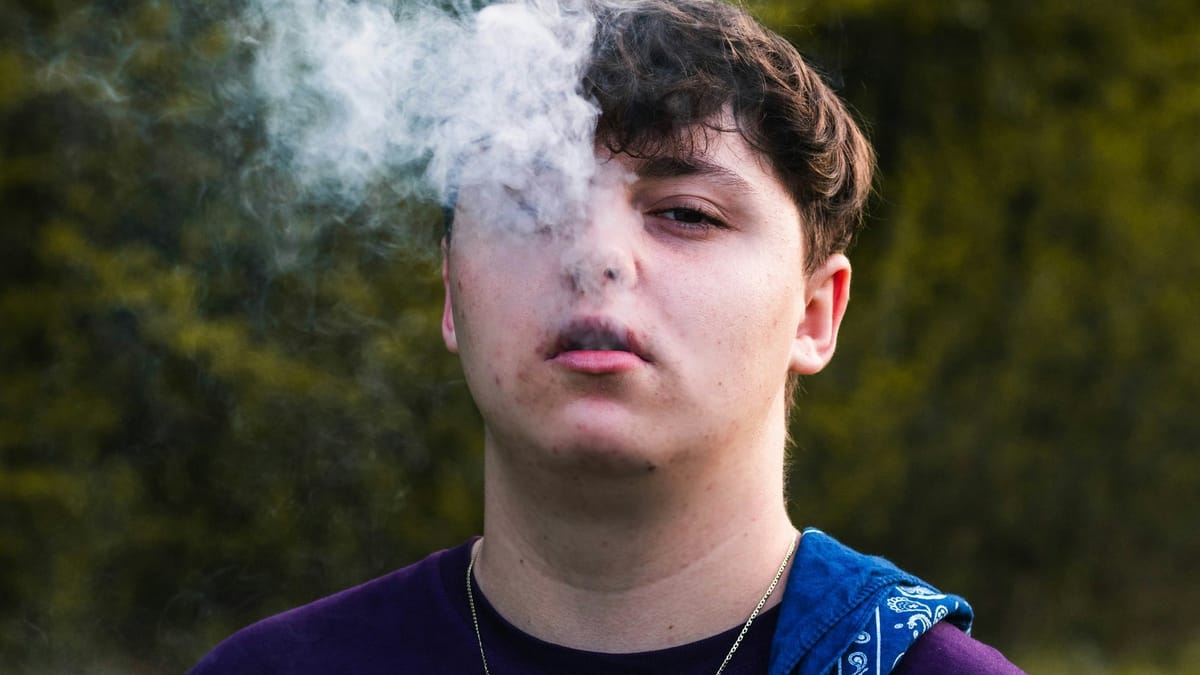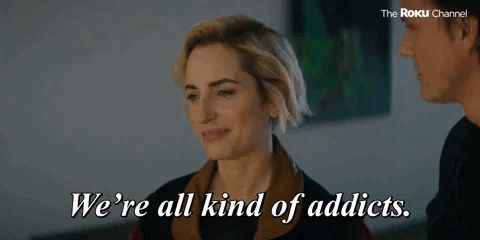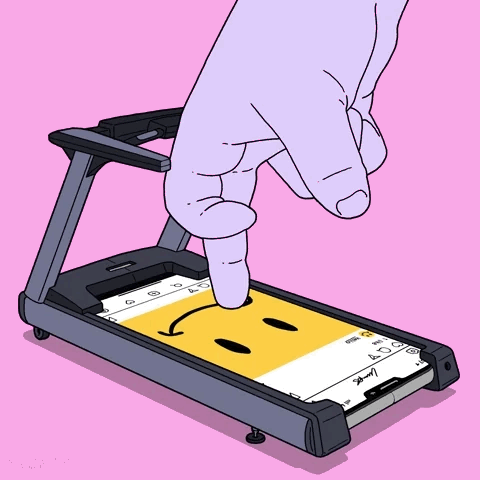Your Brain's Secret Addiction Switch

Imagine your brain as a grand concert hall, where neurotransmitters are the talented musicians. For years, we've been transfixed by dopamine's solo performance in the addiction narrative. But what if we've been missing the full symphony? Beyond the spotlight, a diverse ensemble of chemical messengers orchestrates the complex melody of addictive behavior. Serotonin whispers of mood, glutamate amplifies cravings, while GABA attempts to mute impulsivity. This intricate interplay holds the key to unlocking new understanding and potentially revolutionary treatments for addiction.
Addiction is far more than a simple matter of willpower or moral failing. It's a complex neurobiological disorder that hijacks the brain's chemical messaging system. While dopamine has long been cast as the lead player in addiction's story, emerging research reveals a far more nuanced picture – a true symphony of neurotransmitters working in concert to drive compulsive behavior.
For decades, the "dopamine hypothesis" dominated our understanding of addiction. This powerful chemical messenger, associated with pleasure and reward, plays a crucial role. However, fixating solely on dopamine paints an incomplete picture. To truly grasp the mechanisms of addiction and develop more effective treatments, we must expand our focus to encompass the entire ensemble of neurotransmitters involved.
Serotonin, glutamate, GABA, norepinephrine, and others – each of these chemical messengers contributes its own unique voice to the addiction chorus. By exploring how these various neurotransmitters interact and influence addictive behaviors, we gain a deeper understanding of why breaking free from substance abuse is so challenging for many individuals. This holistic approach also opens up exciting new avenues for potential treatments and interventions.
Dopamine: The Brain's Addiction Conductor and Reward System Maestro
To understand addiction's complex melody, we must first appreciate the powerful solo performance of dopamine. This neurotransmitter has long been recognized as the maestro of the brain's reward system, conducting a mix of neural activity that reinforces pleasurable experiences and motivates us to repeat them.
In a healthy brain, dopamine release is carefully regulated. It surges in response to natural rewards like food, social interaction, or achievement, creating feelings of pleasure and satisfaction. This chemical signal helps us learn which behaviors are beneficial and worth repeating. It's an elegant system that has evolved to promote survival and well-being.
However, drugs of abuse exploit this delicate balance, hijacking the dopamine system with brutal efficiency. Most addictive substances cause an unnaturally large flood of dopamine in the brain, far exceeding the levels triggered by natural rewards. This overwhelming surge creates the intense euphoria or "high" associated with drug use.
The problem lies not just in the intensity of this dopamine release, but in its reliability and speed. While natural rewards can be unpredictable and often require effort, drugs deliver a consistent, immediate dopamine boost. This potent and dependable effect begins to rewire the brain, strengthening neural pathways associated with drug use and weakening those linked to healthier activities.
Over time, repeated exposure to drugs can lead to lasting changes in the brain's reward circuitry. The system becomes desensitized, requiring more of the substance to achieve the same effect – a phenomenon known as tolerance. Simultaneously, the brain's baseline dopamine levels may decrease, leading to feelings of anhedonia (the inability to feel pleasure) when not using the drug.
This dopamine dysregulation explains why individuals struggling with addiction often report that they no longer use drugs to feel good, but rather to feel "normal" or to avoid feeling bad. The brain has adapted to the presence of the drug, and its absence creates a biochemical imbalance that drives continued use.
Understanding dopamine's central role has led to significant advances in addiction treatment. Medications that target the dopamine system, such as buprenorphine for opioid addiction or varenicline for nicotine dependence, have proven effective in helping many individuals manage cravings and maintain recovery.
However, as crucial as dopamine is to the addiction story, it's only one instrument in a complex neurochemical system. To fully comprehend and effectively treat addiction, we must expand our focus to include the other players in this intricate biological symphony.

Serotonin in Addiction: Mood, Mental Health, and Recovery's Hidden Influencer
While dopamine commands the spotlight in addiction's neural symphony, serotonin plays a crucial supporting role, its influence subtly shaping the entire performance. Often called the "feel-good" neurotransmitter, serotonin's reach extends far beyond simple happiness, impacting mood, appetite, sleep patterns, and even pain perception.
In the brain, serotonin acts as a chemical messenger that helps regulate emotional states. It's particularly important in maintaining a stable mood and promoting feelings of well-being and contentment. When serotonin levels are balanced, we tend to feel emotionally resilient, socially connected, and generally optimistic. This neurotransmitter also influences our sleep-wake cycle, appetite, and how we perceive pain – all factors that can significantly impact addiction and recovery.
The relationship between serotonin and addiction is complex and multifaceted. Many drugs of abuse, particularly stimulants like cocaine and ecstasy (MDMA), directly affect the serotonin system. These substances can cause a rapid increase in serotonin levels, contributing to feelings of euphoria and emotional connectedness. However, this artificial boost often leads to depleted serotonin levels once the drug wears off, potentially triggering depression, anxiety, and intense cravings.
Chronic substance abuse can lead to long-term alterations in the brain's serotonin system. These changes may contribute to the high rates of co-occurring mental health disorders seen in individuals struggling with addiction. Depression and anxiety, both strongly linked to serotonin dysfunction, are particularly common among those with substance use disorders.
The interplay between serotonin, addiction, and mental health creates a challenging cycle. Low serotonin levels can exacerbate negative emotional states, potentially driving an individual to seek relief through substance use. Conversely, substance abuse can further disrupt serotonin function, worsening mood disorders and increasing the likelihood of continued drug use.
Understanding serotonin's role has important implications for addiction treatment. Medications that target the serotonin system, such as selective serotonin reuptake inhibitors (SSRIs), are sometimes used in addiction recovery, particularly when co-occurring depression or anxiety is present. By addressing underlying mood disorders, these treatments may help reduce the risk of relapse and improve overall quality of life for individuals in recovery.
Non-pharmacological interventions that naturally boost serotonin levels – such as regular exercise, exposure to sunlight, and certain dietary changes – are often incorporated into holistic addiction treatment programs. These approaches can complement traditional therapies, helping to restore balance to the brain's chemical messaging system.
It's clear that serotonin plays a vital role in this intricate neural ballet. By acknowledging and addressing serotonin's influence, we can develop more comprehensive and effective strategies for treating addiction and supporting long-term recovery.
GABA and Glutamate: The Yin and Yang of Neural Signaling in Addiction
GABA (gamma-aminobutyric acid) and glutamate perform a delicate balancing act too. These two neurotransmitters often work in opposition, with GABA providing a calming influence and glutamate driving excitation and plasticity. Understanding their roles and interplay is crucial to grasping the full complexity of addiction's neurobiological underpinnings.
GABA: The Brain’s Brake Pedal
GABA serves as the primary inhibitory neurotransmitter in the central nervous system. It acts like a brake pedal for neural activity, reducing the excitability of neurons and promoting a sense of calm. In the context of addiction, GABA plays a critical role in modulating the reward system and stress responses.
Many drugs of abuse, particularly central nervous system depressants like alcohol and benzodiazepines, enhance GABA's effects. These substances bind to GABA receptors, amplifying the neurotransmitter's inhibitory action. This leads to the relaxation and anxiety reduction that many users seek, but it can also result in dependence and addiction.
The relationship between GABA and addiction is particularly evident in withdrawal symptoms. As the brain adapts to the presence of GABA-enhancing drugs, it reduces its own GABA production and sensitivity. When drug use stops, this leaves the brain in a state of hyperexcitability, manifesting as anxiety, tremors, and in severe cases, seizures.
Interestingly, some medications used in addiction treatment target the GABA system. For example, baclofen, a GABA-B receptor agonist, has shown promise in treating alcohol use disorder by reducing cravings and anxiety associated with withdrawal.
Glutamate: The Brain’s Accelerator
If GABA is the brake pedal, glutamate is the accelerator in the brain's signaling system. As the primary excitatory neurotransmitter, glutamate plays a crucial role in learning, memory formation, and neural plasticity – the brain's ability to form new connections and adapt to new experiences.
In addiction, glutamate's role becomes particularly significant. Chronic drug use can lead to lasting changes in glutamate transmission, especially in key brain regions associated with reward, motivation, and decision-making. These alterations contribute to the hallmarks of addiction: compulsive drug-seeking behavior and loss of control over drug use.
During withdrawal, the glutamate system often becomes hyperactive, contributing to cravings and relapse risk. This glutamate surge is thought to be a key driver of the intense desire for the drug that many individuals in recovery experience, particularly in response to drug-related cues or stressors.
The plasticity-inducing effects of glutamate also play a role in the formation of powerful drug-associated memories. These memories can trigger cravings long after drug use has stopped, making sustained recovery challenging.
The GABA-Glutamate Balance in Addiction Treatment
Understanding the interplay between GABA and glutamate opens up new avenues for addiction treatment. Medications that modulate these systems are being explored as potential therapies. For instance, acamprosate, used in alcohol use disorder treatment, is thought to work by restoring balance between GABA and glutamate systems disrupted by chronic alcohol use.
Moreover, novel approaches targeting glutamate receptors, such as ketamine and its derivatives, are being investigated for their potential to disrupt drug-associated memories and reduce cravings.
It becomes increasingly clear that effective treatment must address the intricate balance of excitation and inhibition in the brain. This nuanced understanding moves us beyond simplistic views of addiction and towards more comprehensive, neurobiology-informed approaches to prevention, treatment, and recovery support.

Harmonizing Our Understanding of Addiction
As our understanding of addiction's complex neurobiology deepens, so too does our approach to treatment. Current therapies already target various neurotransmitter systems, offering hope to those struggling with substance use disorders. Medications like naltrexone for opioid and alcohol addiction, varenicline for nicotine dependence, and bupropion for smoking cessation all work by modulating specific neurotransmitter pathways.
Emerging research is opening up exciting new avenues for intervention. Scientists are exploring novel compounds that can fine-tune the delicate balance of neurotransmitters disrupted by addiction. For instance, drugs targeting the glutamate system show promise in reducing cravings and preventing relapse. Innovative approaches using neurofeedback and transcranial magnetic stimulation aim to directly modulate brain activity, potentially restoring healthy neurotransmitter function.
As we conclude our exploration of addiction's neurochemical symphony, one truth becomes abundantly clear: addiction is far more than a simple matter of willpower or moral failing. It is a complex disorder shaped by an intricate interplay of neurotransmitters, each contributing its unique voice to the chorus of compulsion and craving.
While dopamine has long been cast as the lead performer in this neural concert, we now recognize that it is but one player in a vast ensemble. Serotonin, GABA, glutamate, and a host of other chemical messengers all play crucial roles in the development, maintenance, and potential treatment of addiction.
This expanded understanding calls for a more holistic approach to addiction treatment and recovery. No single medication or intervention can address all aspects of this complex disorder. Instead, effective treatment must consider the entire neurobiological landscape, combining pharmacological approaches with behavioral therapies, lifestyle changes, and social support.
As research continues to unveil the intricacies of addiction's neurobiology, we move closer to more effective, personalized treatments. By embracing the full complexity of addiction's neural symphony, we open the door to more compassionate, scientifically-informed approaches to prevention, treatment, and long-term recovery support. In doing so, we offer hope not just for individuals struggling with addiction, but for families and communities affected by this pervasive disorder.
Nerea’s Encounter with Addiction
Nerea always saw the world through a unique lens. To her, life was a symphony of experiences, each day a new movement in an ever-evolving concerto. Growing up in the Basque Country, where her name meant "mine" or "my own," Nerea felt a deep connection to her roots and the natural beauty surrounding her. Her curiosity and adventurous spirit often led her to explore the rugged landscapes, each hike a new adventure, each peak a new discovery.
But as she transitioned into adulthood, Nerea's life took a darker turn. The pressures of university and the weight of expectations led her down a path she never anticipated. What began as casual experimentation with substances soon spiraled into a full-blown addiction. Her once harmonious life became a cacophony of chaos, each day a struggle to find her way back to the light.
Nerea's fascination with nature's symphony had not abandoned her, though. In her darkest moments, she found peace in the memory of the forest's whispers and the patterns of light and shadow. Determined to reclaim her life, she sought help and embarked on a journey of recovery. It was during this time that she decided to pursue a degree in neurobiology, driven by a desire to understand the very forces that had once ensnared her.
Her studies revealed a world beyond the familiar narrative of dopamine. Nerea discovered that addiction was not just a solo performance by this well-known neurotransmitter but a complex symphony involving serotonin, glutamate, and GABA. She realized that to truly grasp the mechanisms of addiction and develop effective treatments, one had to consider the entire ensemble of neurotransmitters.
Nerea's personal battle with addiction fueled her research. She uncovered how these chemical messengers interacted to drive compulsive behavior and how a holistic approach could offer new avenues for treatment. Her groundbreaking work provided hope to many, proving that understanding the full symphony of the brain was key to unlocking profound insights and offering a lifeline to those struggling with addiction.
Nerea’s journey from victim to survivor was a testament to the power of resilience and the importance of seeing beyond the obvious, embracing the full symphony of life.
Key Takeaways
- Complex Neurobiology: Addiction is a complex neurobiological disorder that involves a diverse ensemble of neurotransmitters, not just dopamine.
- Dopamine's Role: Dopamine plays a crucial role in the brain's reward system, reinforcing pleasurable experiences and motivating repeated behaviors.
- Beyond Dopamine: Focusing solely on dopamine provides an incomplete picture of addiction. Other neurotransmitters like serotonin, glutamate, and GABA also play significant roles.
- Serotonin's Influence: Serotonin impacts mood, appetite, sleep patterns, and pain perception, all of which are crucial in addiction and recovery.
- Glutamate's Role: Glutamate is the primary excitatory neurotransmitter, essential for learning and memory. It becomes hyperactive during withdrawal, contributing to cravings and relapse risk.
- GABA's Function: GABA serves as the brain's primary inhibitory neurotransmitter, promoting calmness and reducing neural excitability. It is significantly affected by substances like alcohol and benzodiazepines.
- Neurotransmitter Interplay: The interaction between various neurotransmitters is key to understanding the full complexity of addictive behaviors and developing effective treatments.
- Holistic Treatment Approaches: Effective addiction treatment requires a holistic approach that considers the entire neurobiological landscape, combining pharmacological and non-pharmacological interventions.
- Emerging Treatments: Innovative treatments targeting neurotransmitter systems, such as medications affecting the glutamate system and non-pharmacological interventions like neurofeedback, show promise in addiction therapy.
- Personalized Medicine: Understanding the full symphony of neurotransmitters in addiction opens the door to more personalized and effective treatment strategies, offering hope for long-term recovery.

Thank you for reading this post!
If you found it helpful or informative, please consider sharing a 7 day free trial with your friends, family, or colleagues who might benefit from it.
Your support helps me reach more people and spread awareness on important topics like this. Together, we can make a difference!
References
https://www.ncbi.nlm.nih.gov/pmc/articles/PMC6135092/
https://www.ncbi.nlm.nih.gov/books/NBK424849/
https://www.ncbi.nlm.nih.gov/pmc/articles/PMC5176106/
https://www.webmd.com/mental-health/addiction/features/new-prescriptions-for-addiction-treatment
https://pubmed.ncbi.nlm.nih.gov/25069523/
https://pubmed.ncbi.nlm.nih.gov/12924747/
https://www.familyaddictionspecialist.com/blog/what-is-holistic-treatment-in-addiction-recovery
https://www.ncbi.nlm.nih.gov/pmc/articles/PMC4031575/
https://www.addictioncenter.com/treatment/holistic-therapy/
https://www.ncbi.nlm.nih.gov/pmc/articles/PMC4065474/
https://www.ncbi.nlm.nih.gov/pmc/articles/PMC80880/
https://www.ncbi.nlm.nih.gov/pmc/articles/PMC6135092/
https://learn.genetics.utah.edu/content/addiction/brainpathways/
https://www.health.gov.au/our-work/drug-help
https://www.ncbi.nlm.nih.gov/books/NBK424849/
https://www.medicalnewstoday.com/articles/326649
This article was written by Ariadna Paniagua, an experienced writer and editor for several institutions, papers, and websites.




